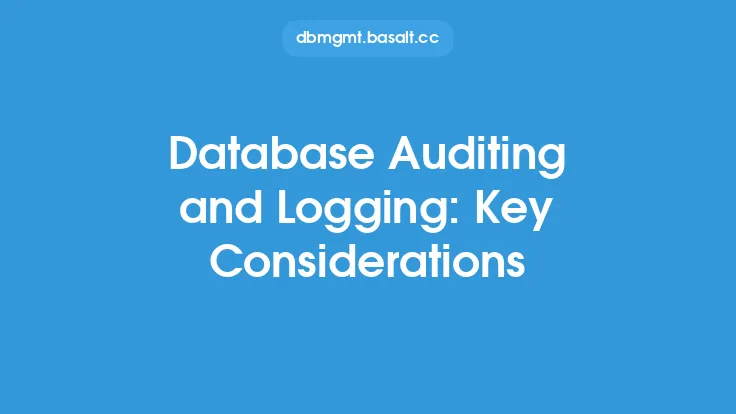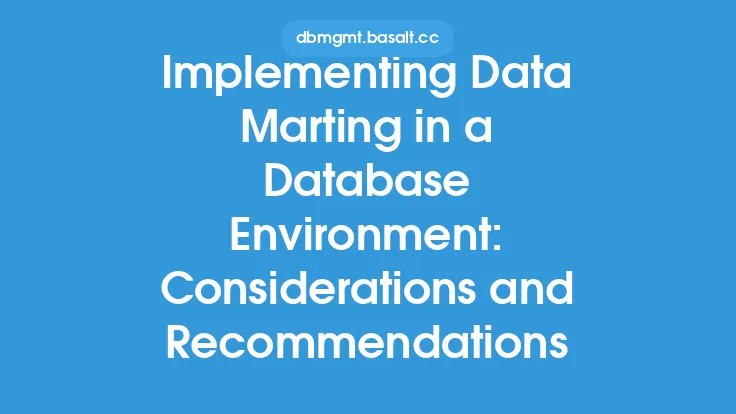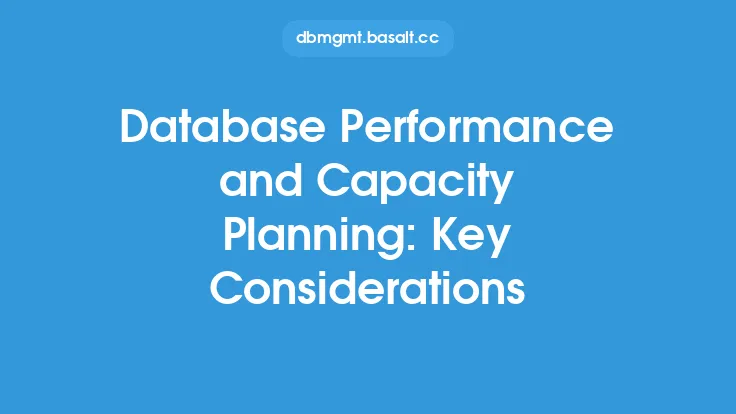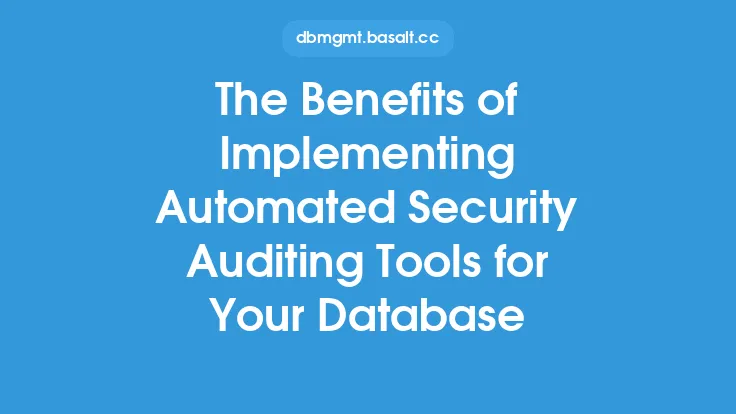Database security auditing is a critical process that involves evaluating the security posture of a database to identify vulnerabilities, weaknesses, and compliance issues. It is an essential aspect of database management, as it helps to ensure the confidentiality, integrity, and availability of sensitive data. In this article, we will delve into the key considerations and recommendations for database security auditing, providing a comprehensive overview of the process and its importance.
Introduction to Database Security Auditing
Database security auditing involves a thorough examination of the database's security controls, including access controls, authentication mechanisms, data encryption, and auditing logs. The goal of a database security audit is to identify potential security risks and provide recommendations for remediation. A database security audit typically includes a review of the database's configuration, user accounts, permissions, and access controls, as well as an analysis of the database's network and system security.
Key Considerations for Database Security Auditing
When conducting a database security audit, there are several key considerations to keep in mind. First, it is essential to understand the database's security requirements and compliance obligations. This includes identifying the types of data stored in the database, the level of sensitivity of the data, and the relevant regulatory requirements. For example, databases that store personal identifiable information (PII) or financial data may be subject to specific compliance requirements, such as the General Data Protection Regulation (GDPR) or the Payment Card Industry Data Security Standard (PCI DSS).
Another critical consideration is the database's architecture and configuration. This includes the database management system (DBMS) used, the operating system, and the network infrastructure. A thorough understanding of the database's architecture is essential to identify potential security vulnerabilities and weaknesses. For instance, a database that uses a outdated DBMS or operating system may be vulnerable to known security exploits.
Database Security Audit Components
A comprehensive database security audit typically includes several components, including:
- Access control review: This involves evaluating the database's access controls, including user accounts, permissions, and access rights. The goal is to ensure that access to the database is restricted to authorized personnel and that sensitive data is protected.
- Authentication mechanism review: This involves evaluating the database's authentication mechanisms, including password policies, multi-factor authentication, and Kerberos authentication.
- Data encryption review: This involves evaluating the database's data encryption mechanisms, including encryption algorithms, key management, and encryption protocols.
- Auditing log review: This involves evaluating the database's auditing logs, including log retention, log rotation, and log analysis.
- Network and system security review: This involves evaluating the database's network and system security, including firewall configurations, intrusion detection systems, and vulnerability scanning.
Recommendations for Database Security Auditing
To ensure the effectiveness of a database security audit, several recommendations should be followed. First, it is essential to conduct regular security audits, ideally on a quarterly or bi-annual basis. This helps to identify potential security risks and vulnerabilities in a timely manner, allowing for prompt remediation.
Another recommendation is to use automated security auditing tools, such as vulnerability scanners and compliance scanners. These tools can help to identify potential security vulnerabilities and compliance issues, reducing the risk of human error and improving the efficiency of the audit process.
Additionally, it is essential to involve relevant stakeholders in the audit process, including database administrators, security teams, and compliance officers. This helps to ensure that the audit is comprehensive and that all relevant security controls are evaluated.
Best Practices for Database Security Auditing
To ensure the effectiveness of a database security audit, several best practices should be followed. First, it is essential to develop a comprehensive audit plan, including a clear scope, objectives, and timelines. The audit plan should also include a detailed description of the audit procedures and methodologies to be used.
Another best practice is to use a risk-based approach to auditing, focusing on the most critical security controls and vulnerabilities. This helps to ensure that the audit is targeted and effective, reducing the risk of missing critical security issues.
Finally, it is essential to document the audit findings and recommendations, including a detailed report and remediation plan. The report should include a summary of the audit findings, recommendations for remediation, and a prioritized list of action items.
Common Database Security Audit Findings
Database security audits often identify common security vulnerabilities and weaknesses, including:
- Weak passwords: Weak passwords are a common security vulnerability, allowing unauthorized access to the database.
- Inadequate access controls: Inadequate access controls, including insufficient permissions and access rights, can allow unauthorized access to sensitive data.
- Outdated software: Outdated software, including DBMS and operating systems, can leave the database vulnerable to known security exploits.
- Inadequate data encryption: Inadequate data encryption, including weak encryption algorithms and poor key management, can compromise the confidentiality and integrity of sensitive data.
- Insufficient auditing logs: Insufficient auditing logs, including inadequate log retention and log analysis, can make it difficult to detect and respond to security incidents.
Conclusion
Database security auditing is a critical process that involves evaluating the security posture of a database to identify vulnerabilities, weaknesses, and compliance issues. By following the key considerations and recommendations outlined in this article, organizations can ensure the effectiveness of their database security audits and improve the overall security of their databases. Remember, database security auditing is an ongoing process that requires regular attention and maintenance to ensure the confidentiality, integrity, and availability of sensitive data.





